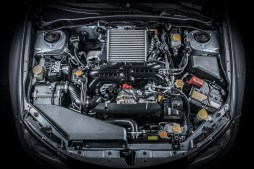Your Ultimate Checklist for Handling Check Engine Light Alerts
Seeing the check engine light on your dashboard can be alarming for any driver. However, staying calm and knowing the steps to take can help you effectively address this issue. In this ultimate checklist, we’ll guide you through everything you need to know when your vehicle’s check engine light illuminates.
Understanding the Check Engine Light
The check engine light is part of your vehicle’s onboard diagnostics system. It serves as a warning that something might be wrong with your car’s performance or emissions systems. The issues can range from minor problems, like a loose gas cap, to more serious concerns such as engine malfunctions or transmission issues.

Step 1: Check for Obvious Issues
Before panicking, examine a few common culprits that could trigger the check engine light. Start by ensuring that your gas cap is securely tightened; a loose or damaged cap can lead to fuel vapors escaping and trigger the sensor. Additionally, look under the hood for any visible leaks or disconnected hoses that may need immediate attention.
Step 2: Use an OBD-II Scanner
If no obvious issues are found, using an OBD-II scanner can help identify specific trouble codes associated with the check engine light. These scanners are available at many auto parts stores, and some places even offer free diagnostic services. Once connected, it will display error codes that indicate what might be wrong with your vehicle.
Step 3: Research Troubleshooting Codes
Once you have retrieved the trouble codes from the OBD-II scanner, research them online or in your vehicle’s manual to understand their implications. Each code corresponds to a specific issue within various systems of your car—be it ignition timing problems or catalytic converter malfunctions—helping you determine how urgent repairs may be.
Step 4: Decide on Repair Options
After diagnosing the problem(s), decide whether you’re comfortable making repairs yourself or if it’s time to visit a mechanic. For minor issues (like replacing spark plugs), DIY solutions may save time and money; however, complex problems typically require professional expertise for safe handling and accurate repair.
In summary, while seeing a check engine light might feel stressful at first glance; following this checklist helps simplify addressing potential issues efficiently and effectively. Regular maintenance checks go hand-in-hand with proactive measures in avoiding future alerts.
This text was generated using a large language model, and select text has been reviewed and moderated for purposes such as readability.











